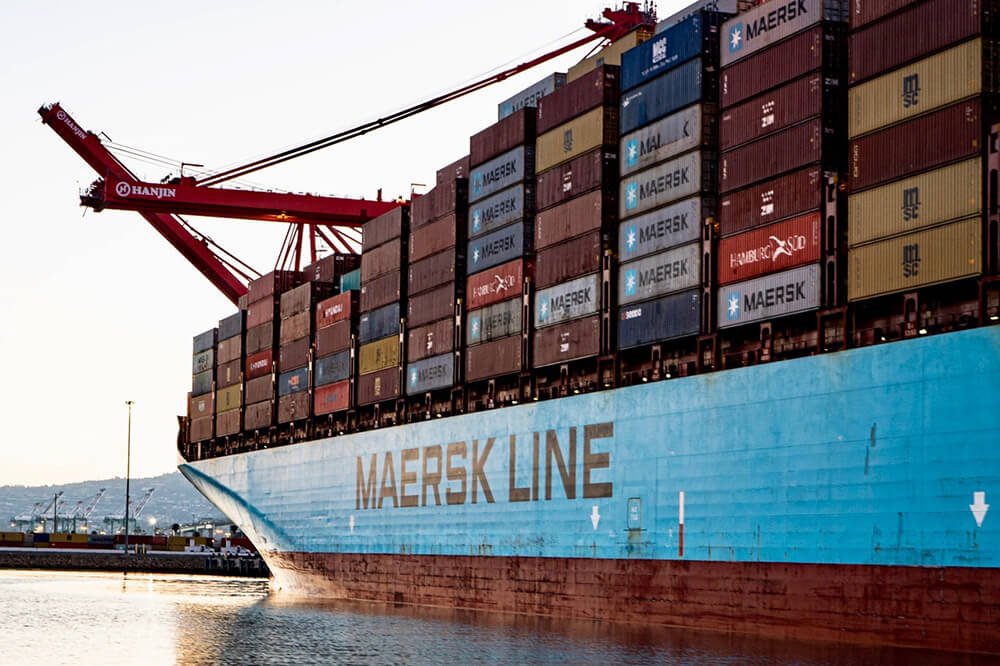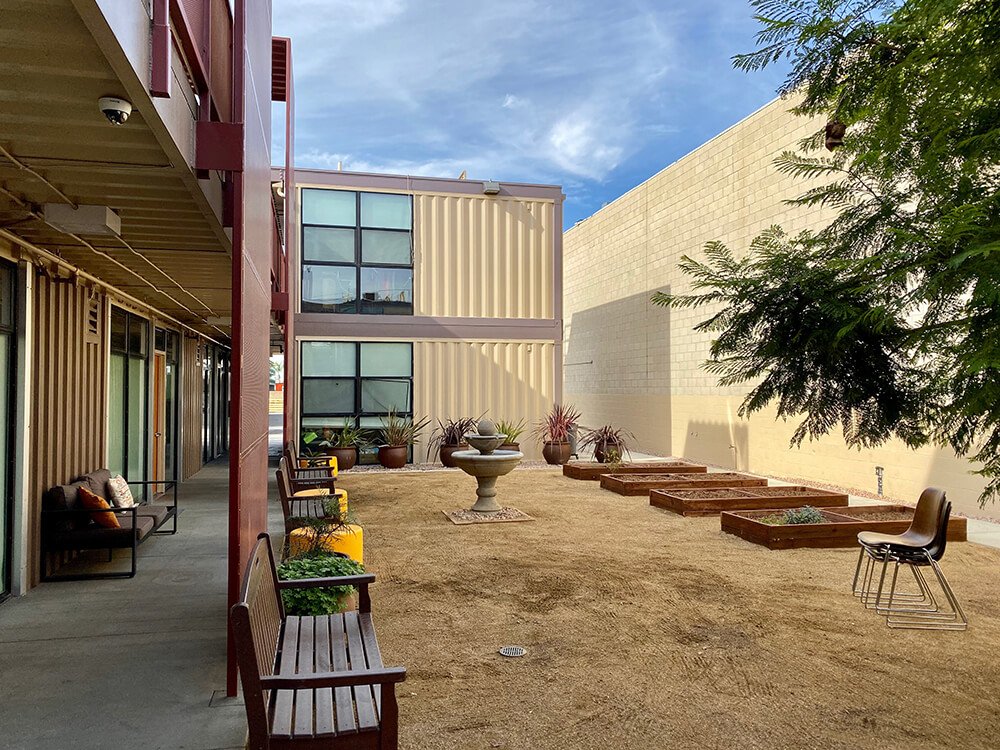Container Housing
Are Recycled Shipping Containers the Answer to Affordable Housing?
I recently reposted an article from the Long Beach Business Journal about CRATE Modular, a company that repurposes shipping containers for habitable use. A specific project mentioned was Potters Lane, a 16-unit apartment development for homeless veterans in Orange County, constructed entirely from recycled shipping containers. The project is owned and operated by the non-profit American Family Housing, whose staff was kind enough to allow me a site visit (see photos below).
But first, a brief history of modular construction. Architect and futurist Buckminster Fuller originally conceived of using modular housing components nearly a century ago. A little-known fact is that the U.S. government used a prefabrication system to build residential housing for the Manhattan Project in Oak Ridge, Tennessee during World War II. Mobile homes and modular classrooms debuted in the 1950’s, which also saw the development of intermodal containers that revolutionized the global shipping industry. The first U.S. patent “for conversion of one or more steel shipping containers into habitable housing” was filed in 1987. Early uses of containers for housing were beginning to happen in the 1990’s and 2000’s, including some fairly whimsical designs.
Typical steel shipping containers are 8 x 20 (160 square feet) or 8 x 40 (320 square feet). A large number of containers wind up being de-commissioned due to the cost of sending them back to their point of origin. It is these containers that are available for recycling as modular building units. As part of this process, openings are cut for doors and windows (typically requiring reinforcement); electrical, plumbing and mechanical systems are installed; paint and finish materials are applied; and the module is transported to the site by truck like any other shipping container.
The cost of self-contained modular units from CRATE is $45,000 for a single ($281 per square foot for 160 square feet) or $75,000 for a double ($234 per square foot for 320 square feet); these prices are for accessory dwelling units (ADU), excluding taxes, delivery, sitework, installation and indirect costs. The photo below shows the actual transformation of shipping containers into modular housing units (courtesy of CRATE Modular):
Potters Lane is an excellent example of a container housing project, an award-winning design by SVA Architects, and the first of its kind to be built. The 16 studio units each encompass three containers or 480 square feet; additional containers were utilized for enclosed common areas. The project is 10,187 square feet, completed in early 2017, featuring architectural elements that make it look more like a conventional building with contemporary industrial aesthetics, along with a number of green and sustainable features that would make it LEED Silver eligible; amenities include an outdoor courtyard and solar carports at the rear. Photos of the project are below, showing the front elevation, courtyard, parking area and a typical unit interior.
Project cost for Potters Lane has been reported at $6.3 million, equating to $356,000-394,000 per unit or $560-618 per square foot, depending on whether or not land cost is included. Funding for these projects typically comes from a variety of public and sometimes private sources; Potters Lane was constructed using state and federal programs targeted specifically towards veterans. The project is considered supportive housing with subsidized rents; services are managed by American Family Housing, who also developed the project.
Flyaway Homes is another developer looking to create innovative solutions for supportive homeless housing. Their flagship is the Steaven K Jones Supportive Community in Los Angeles, a 9-unit project totaling 7,360 square feet, completed in late 2018. The project is targeted to serve the chronically homeless, featuring eight 4-BR shared units, community room and common areas. Reported cost was $3.85 million, equivalent to $428,000 per unit or $523 per square foot. The project is master-leased to People Concern, a local social services agency, who also provides wraparound supportive services.
Another Flyaway project nearby recently broke ground on a leased site that will include 17 units (sixteen 2-BR units, considered a better option for shared housing) and community room in 8,640 square feet. Total construction cost is $3.9 million, equivalent to $299,000 per unit or $451 per square foot. People Concern will also manage supportive services once the project is built. Funding for these projects is a combination of private equity and Proposition HHH funds from the City of Los Angeles (Proposition HHH was approved by city voters in November 2016, issuing $1.2 billion in bonds to fund housing and related services for homeless people). Photos of both projects are below.
While recycled shipping containers have a variety of applications in modular building construction, their use in providing affordable and homeless housing is particularly intriguing, given the magnitude of the problem. Numerous obstacles exist, not the least of which are community opposition to homeless housing, construction costs and long lead times, and lack of conventional funding. Container housing can offer some advantages:
Recycled components (shipping containers) are a green alternative to manufacturing new components or building from scratch
Cost is lower than site-built housing, although the economics of containers v. factory-built modular units is a matter of debate
Construction time is significantly reduced – typically a matter of months, rather than years
Innovations in homeless housing are welcome news, but with 50,000 unsheltered homeless in Los Angeles and Orange Counties alone, new supply is barely making a dent at $100,000+ per person, not including healthcare and other supportive services. Those who advocate for this approach think project design will make for lower operating costs over the long term, with construction costs eventually coming down if the idea gains traction. It remains to be seen whether container housing is a real solution, but anything is a step in the right direction. Web links for American Family Housing and Flyaway Homes are below.








